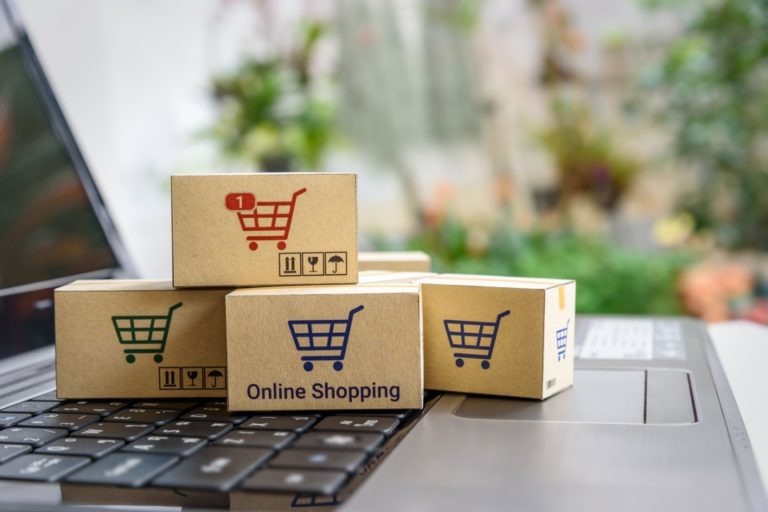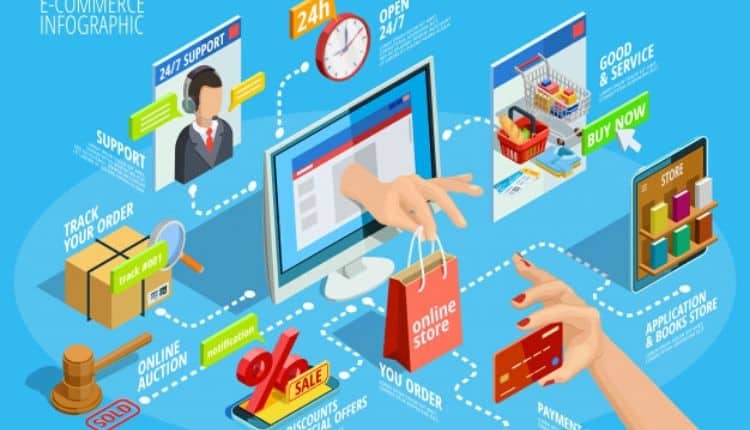- Business
- Updated on April 8, 2025
The Growth of E-Commerce in India: How Online Shopping is Shaping Retail

E-commerce in India has experienced explosive growth in recent years. With the rise of smartphones, faster internet connections, and an increasingly tech-savvy population, online shopping has become the preferred choice for millions of consumers across the country. As traditional retail stores face challenges, e-commerce has begun to redefine the way people shop, offering convenience, variety, and better prices. This article explores how e-commerce is transforming retail in India and the factors contributing to its rapid growth.
Rise of Online Shopping in India
In India, online shopping has become more than just a trend—it has evolved into a significant part of everyday life. The ease of browsing through a wide range of products, comparing prices, and making secure payments has attracted millions of users. Platforms like Amazon, Flipkart, Snapdeal, and others have become household names. These e-commerce giants have invested heavily in infrastructure and technology to ensure a smooth and hassle-free shopping experience.
As internet access has become more affordable and widespread, the number of online shoppers has skyrocketed. According to a report by the Internet and Mobile Association of India (IAMAI), there were 624 million internet users in India as of 2020, and the number is expected to grow further in the coming years. This digital penetration has led to a rise in e-commerce transactions across various sectors.
Factors Driving E-Commerce Growth

1. Smartphone Penetration and Internet Accessibility
One of the primary drivers of e-commerce growth in India is the widespread adoption of smartphones. As smartphone prices have fallen, they have become more accessible to people from all walks of life. According to a report by Statista, there were over 600 million smartphone users in India in 2020. The increase in smartphone usage, combined with affordable data plans, has made online shopping more accessible to the masses.
The launch of 4G internet services by telecom providers like Jio has also played a significant role. High-speed internet has made it easier for consumers to shop online, stream content, and explore products and services. This increased internet connectivity has contributed to the rapid expansion of e-commerce in India, even in rural and semi-urban areas.
2. Convenience and Time-Saving
In today’s fast-paced world, time is a precious commodity. E-commerce offers unparalleled convenience, allowing consumers to shop from the comfort of their homes at any time of the day. The ability to browse products, compare prices, and make purchases within minutes is a significant advantage over traditional retail shopping. The convenience of online shopping has made it particularly popular among busy professionals, homemakers, and students.
Additionally, the availability of various payment options, including digital wallets, UPI, and cash on delivery, has made online shopping even more accessible. These payment methods have eliminated the barriers to entry for many consumers, allowing them to shop effortlessly.
3. Increased Product Variety
One of the main attractions of online shopping is the vast range of products available. E-commerce platforms offer an extensive selection of goods across multiple categories, including electronics, clothing, groceries, beauty products, and more. This variety makes it easy for consumers to find exactly what they are looking for, regardless of niche or preference.
Unlike traditional stores, which have limited shelf space, online retailers can stock thousands of products, offering a broader selection. Consumers can access products from across the globe, which would have been difficult to find locally. For instance, international brands that were once only available in metropolitan cities are now accessible to people in smaller towns and villages.
4. Affordability and Discounts
E-commerce platforms often offer attractive discounts, seasonal sales, and deals that attract price-sensitive customers. Flash sales, limited-time offers, and exclusive promotions allow consumers to buy products at discounted rates. Moreover, the rise of online-only brands and direct-to-consumer models has made products more affordable by cutting out middlemen.
Consumers are also able to compare prices across multiple websites before making a purchase, ensuring they are getting the best deal. This transparency in pricing has significantly influenced consumer behavior, making them more inclined to shop online rather than in traditional stores.
5. Growth of E-Commerce Ecosystem
The growth of e-commerce in India has also given rise to a supportive ecosystem, including logistics, payment gateways, and customer service platforms. With a robust delivery infrastructure in place, online retailers are able to provide timely and reliable services, even in remote areas.
E-commerce companies have partnered with courier services and logistics providers to ensure fast and efficient delivery. The rise of cashless payments and secure online transaction systems has built trust among consumers, further driving the growth of e-commerce.
Challenges Faced by the E-Commerce Industry in India
Despite the rapid growth, the e-commerce industry in India faces several challenges:

- Logistical Issues and Delivery Challenges Although the logistics network in India has improved, there are still significant challenges, especially when it comes to delivering products to remote locations. Delivery times can vary, and the last-mile delivery process can be costly for e-commerce companies.
- Trust Issues and Product Returns While online shopping offers many benefits, some consumers are still wary of making purchases online due to trust issues. Concerns about product quality, counterfeit items, and delayed deliveries persist. Additionally, the process of returning products can be cumbersome for some consumers, leading to dissatisfaction.
- Intense Competition The e-commerce market in India is highly competitive, with multiple players vying for dominance. This intense competition often results in razor-thin margins and pressures to maintain high customer satisfaction levels. New entrants to the market may also struggle to gain a foothold against established players like Amazon and Flipkart.
- Regulatory Hurdles The Indian government has introduced several regulations related to e-commerce, including foreign direct investment (FDI) norms and data protection laws. These regulations can sometimes create uncertainties for businesses operating in the sector. E-commerce companies must constantly adapt to changing policies to ensure compliance.
The Future of E-Commerce in India
Looking ahead, the future of e-commerce in India seems promising. The country’s growing middle class, increasing internet penetration, and changing consumer behavior indicate that online shopping will continue to thrive. Experts predict that e-commerce sales in India will continue to rise, driven by the increasing adoption of smartphones, improved internet access, and changing consumer preferences.
Several trends are expected to shape the future of e-commerce in India:
- Omnichannel Shopping The future of retail is likely to be omnichannel, with consumers shopping across multiple platforms. E-commerce companies are expected to integrate their online and offline channels to provide a seamless shopping experience. This could include features like in-store pick-up for online orders, augmented reality tools, and personalized recommendations.
- Artificial Intelligence (AI) and Personalization AI and machine learning are expected to play a significant role in transforming the e-commerce industry. By leveraging AI, companies can offer personalized shopping experiences, recommending products based on customer behavior and preferences. Chatbots and virtual assistants will also improve customer service, providing instant responses and support.
- Growth of Rural E-Commerce While e-commerce has been predominantly urban, the growth of internet access and smartphone usage in rural areas is driving rural e-commerce. Online platforms are reaching smaller towns and villages, where consumers are eager to embrace e-commerce as a convenient way to shop.
- Sustainability and Ethical Shopping As consumers become more environmentally conscious, there will be an increasing demand for sustainable and ethical products. E-commerce companies will need to adapt to this demand by offering eco-friendly products and packaging. Brands that prioritize sustainability will likely enjoy a competitive advantage in the future.
Read Also : Made in India: The Power of Supporting Local Products
Conclusion
E-commerce in India has revolutionized the way people shop, providing access to a wide range of products, affordability, and convenience. With the continued expansion of the internet, smartphones, and digital payment systems, the future of e-commerce in India looks brighter than ever. As the market matures, it will be shaped by trends like omnichannel retail, AI, and sustainability. For businesses, embracing these trends and meeting consumer demands will be key to thriving in the competitive and rapidly evolving Indian e-commerce landscape.
Join the discussion
Related Articles
No results available
ResetTrending Articles


- Health
- Updated on January 3, 2026

- General
- Updated on January 5, 2026


- General
- Updated on January 1, 2026


- General
- Updated on December 27, 2025


- General
- Updated on December 22, 2025


- General
- Updated on December 20, 2025


- General
- Updated on December 16, 2025


- General
- Updated on December 15, 2025


- General
- Updated on December 11, 2025


- General
- Updated on December 11, 2025
No results available
Reset


